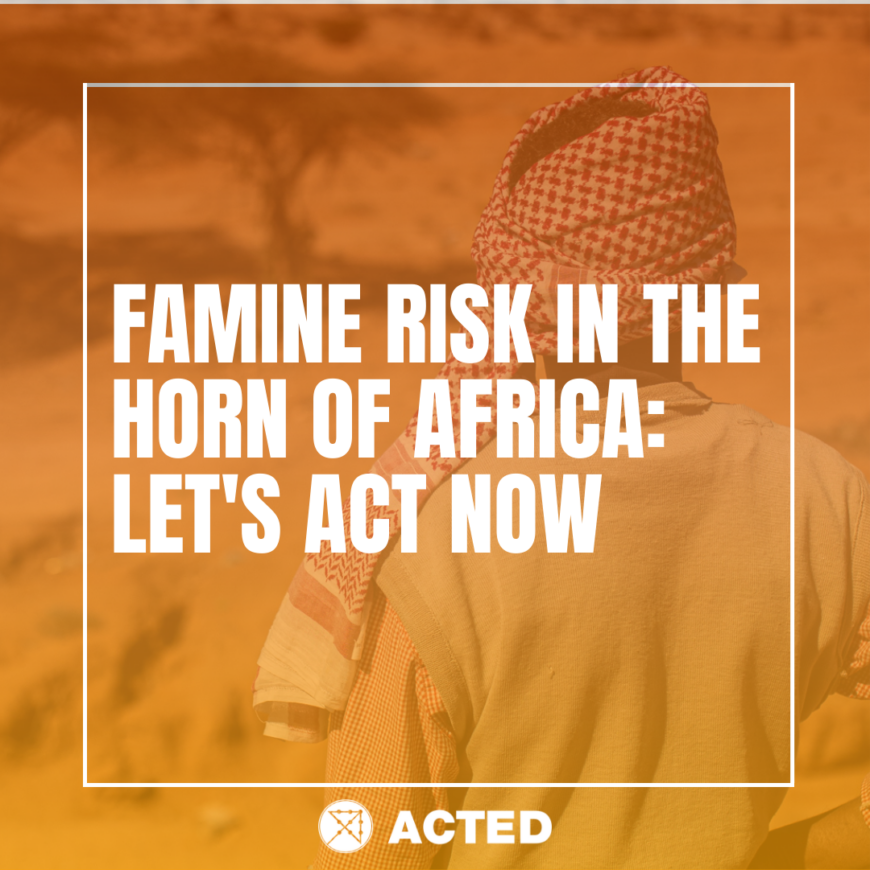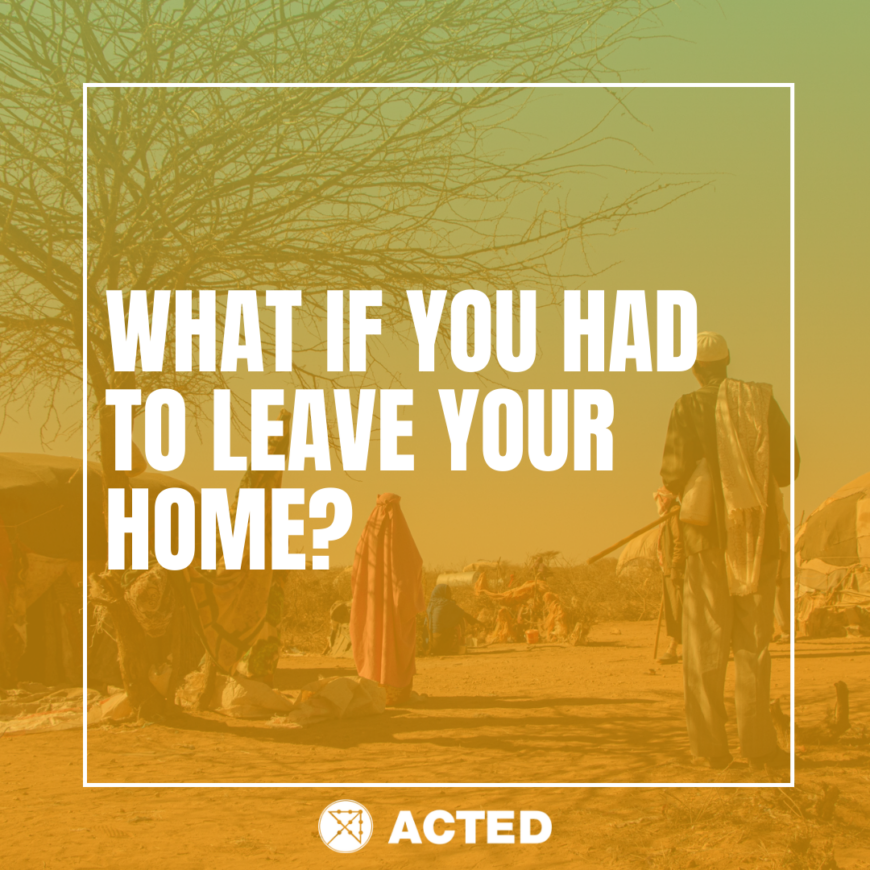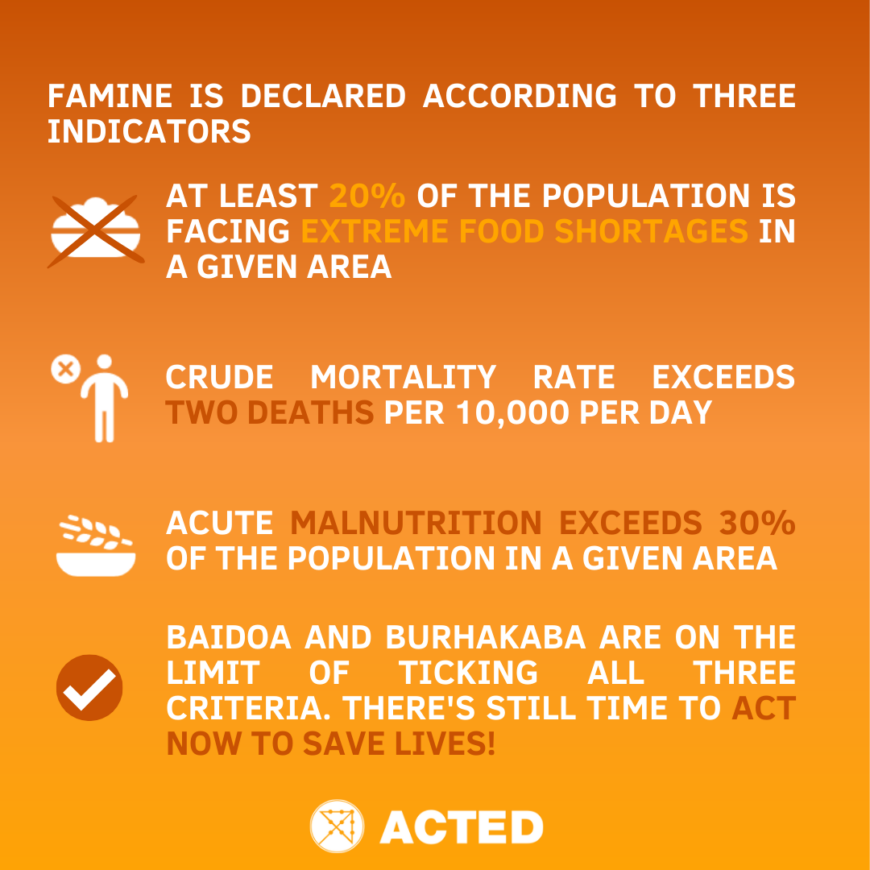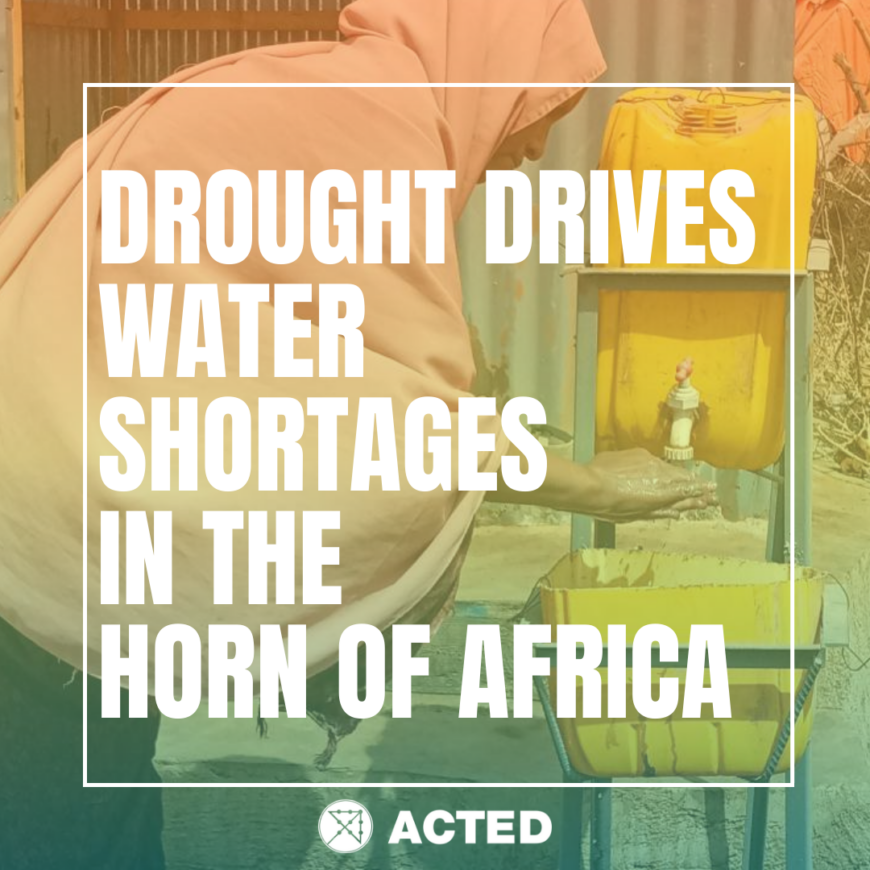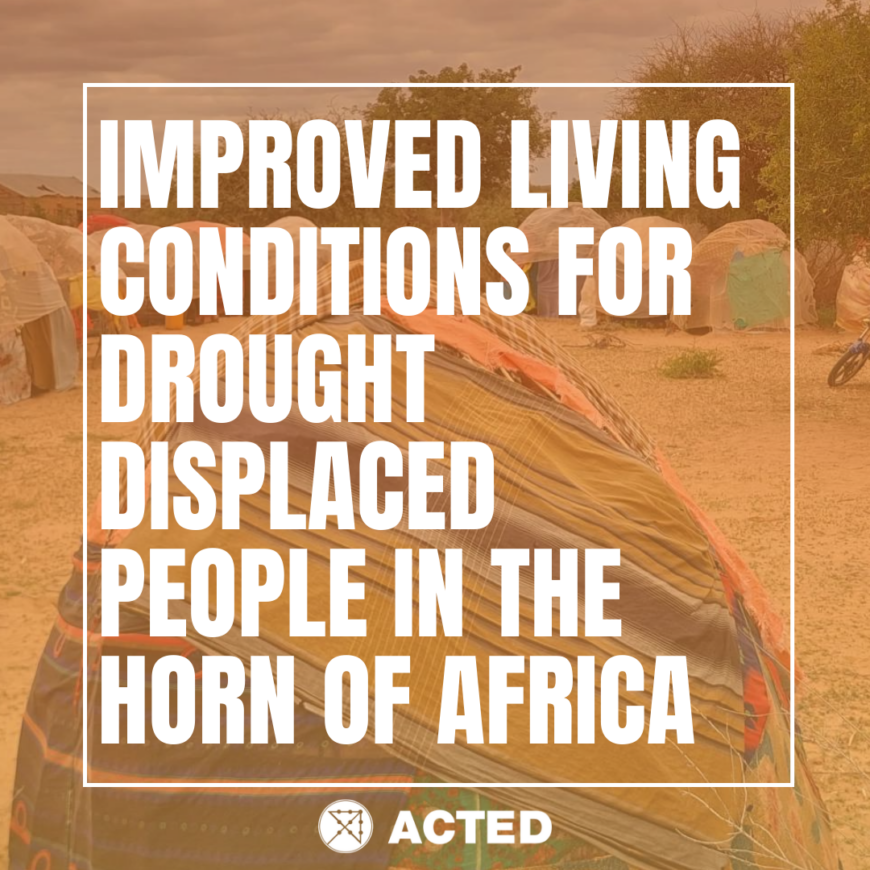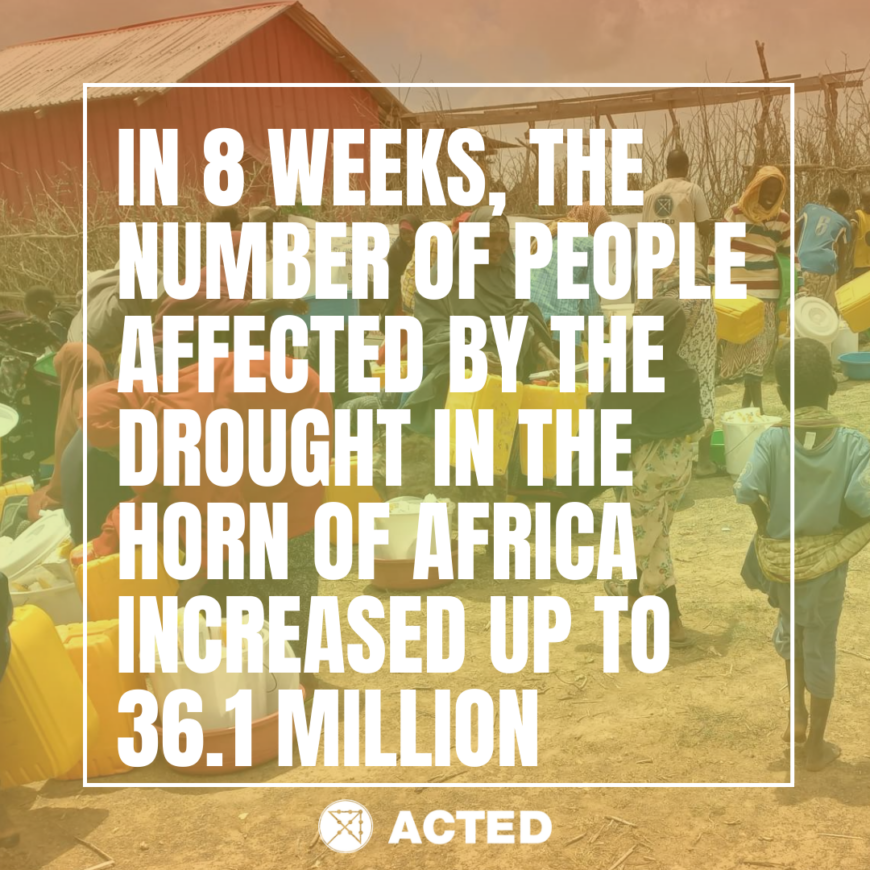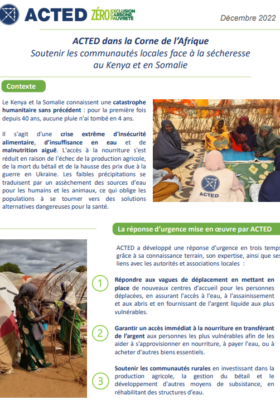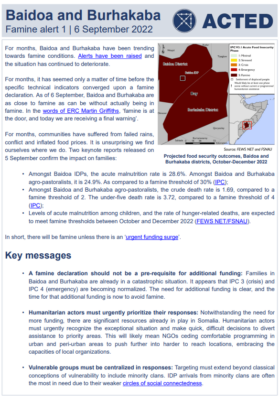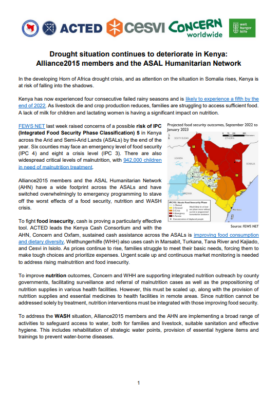High levels of food insecurity and lack of access to water are still very present in the Horn of Africa, despite rainfall in the region. Famine was averted, but all indicators point to the urgent need for humanitarian aid: thousands of people are forced to leave their homes in search of life-saving assistance.
Why do we need to act?
The situation in the Horn of Africa remains critical. The drought is still ongoing with devastating effects predicted such as the possibility of experiencing an El Niño phenomenon. More than 31.9 million people in need of humanitarian assistance.
The cause? Climate change. Weather conditions are becoming more and more unpredictable, rainfall is getting weaker. Droughts have become repetitive: they are no longer a rare phenomenon. They are strong, last longer, their impact is devastating.
The continuation of the drought means that:
- People are hungry: more than 23.5 million people in Somalia, Kenya and Ethiopia are experiencing a “crisis” (IPC 3) level of food insecurity and need emergency food assistance to survive;
- People are thirsty: about 24.9 million people struggle to access enough water for their daily survival;
- People are losing their livelihoods : more than 13.2 million head of cattle have died;
- More than 2.71 million people have been internally displaced, including 1.73 million in Somalia alone who have left their homes due to drought.
- People are getting sick: cholera and measles affect more than 40,000 and 30,000 people respectively.
Drought crisis worsens
While improved rainfall has temporarily eased the effects of the drought, the devastation caused by the 2020-2023 drought crisis in the region will be felt acutely for years to come, particularly now with the threat of an impending El Niño. Such events are likely to lead to further displacement, death and illness.
Immediate intervention, however, can help mitigate the catastrophic and devastating effects, bringing much-desired change for the future.
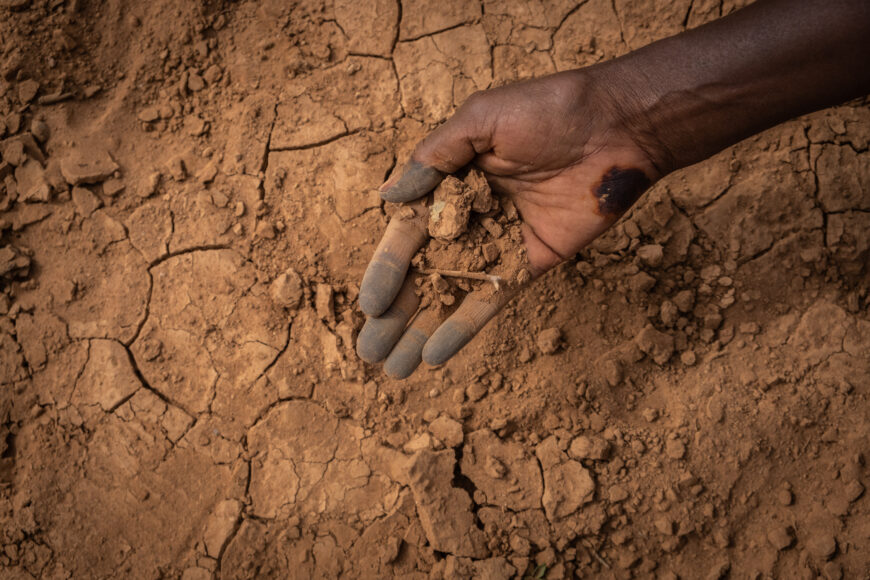
Nearly 32 million people need assistance due to drought in Ethiopia, Kenya and Somalia in 2023, including more than 23.5 million people facing high levels of acute food insecurity and more than 8 million children and pregnant and lactating women facing acute malnutrition.
As many water points have dried up, families are struggling to cook their food, which is deteriorating the quality of their nutrition, which has a negative impact on their health. Overall, the region does not appear to be recovering from the effects of the drought, with some areas at risk of rapidly falling back into the IPC 3 “crisis” level of food insecurity.
Pastoralists’ livelihoods at risk of disappearing
Communities in rural areas living off their land and livestock are struggling to cope with drought. More than 13.2 million livestock have already died and more are expected to die in the coming months if the drought persists. The massive death of livestock represents a global loss of 180 million liters of milk.
As a result, many rural families suffer a substantial loss of income. In Kenya, estimates show that more than 205,000 pastoral households have lost their livelihoods. For most, repopulation is not an option and even if it were possible, it would take years while historical trends in the region indicate that many displaced people may not return to their original settlement areas .
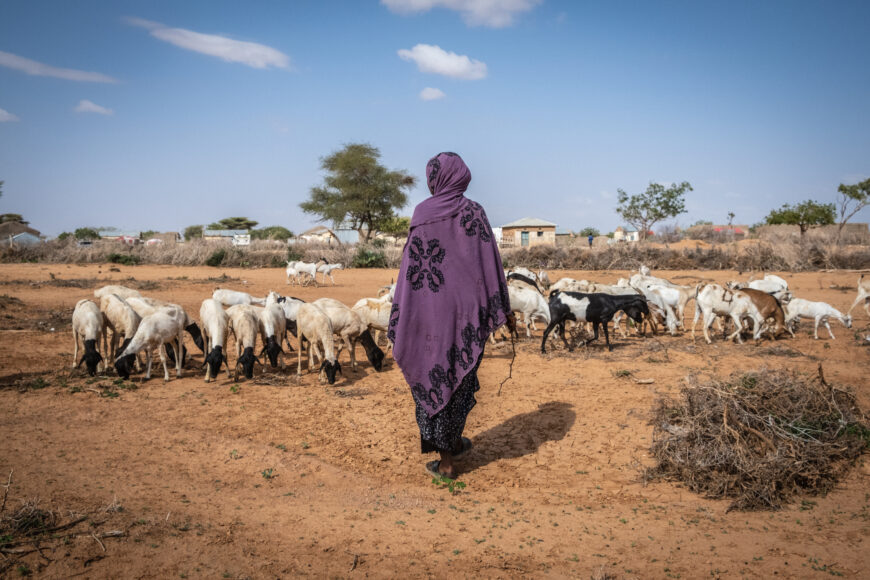
Leaving is the only solution for many people
The drought has made life at home unbearable for millions of people. They have no choice but to go in search of work and find enough food and water away from the drought. This is now the most common choice for survival.
In Somalia, camps hosting displaced communities often lack comfortable living conditions. The successive arrival of hundreds of people every day makes it difficult for new arrivals to settle comfortably in the camps. Most of them arrive with little or nothing of their possessions. Additionally, the camps do not provide privacy for their residents, posing a threat to the safety of women and girls who are more exposed to sexual and gender-based violence.
Communal areas may also be poorly equipped with a lack of sanitation and water facilities to meet the needs of all residents, forcing some to find alternative sources of non-potable water. Lack of access to clean water and overcrowded spaces accelerate the rapid spread of water-borne diseases such as measles and cholera.
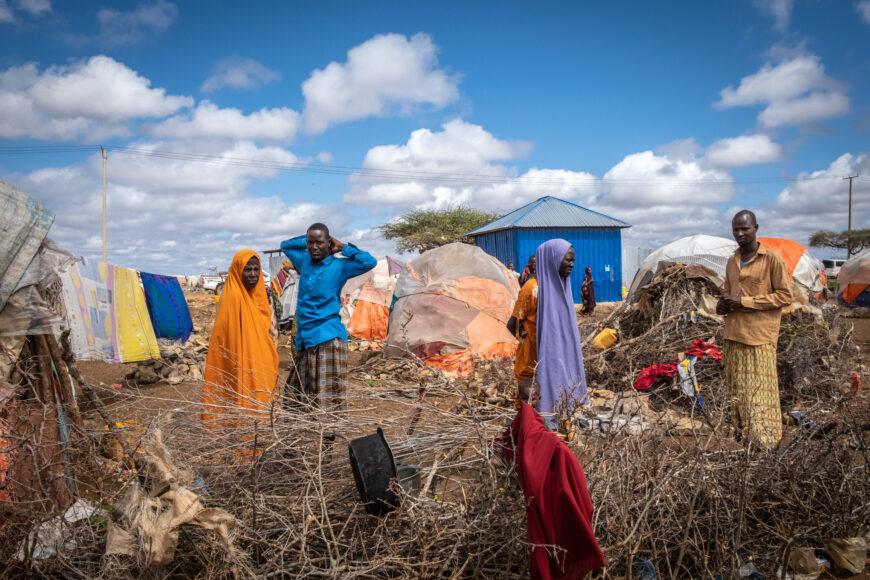
Humanitarian funding and coordinated action still needed on a large scale
Somalia's drought crisis appears to be a never-ending cycle. We must collectively win this fight against hunger.
The UN estimates that US$5.4 billion is needed to support drought-affected populations in Somalia, Kenya and Ethiopia. In 2023, humanitarian funds are still needed to have an impact on keeping people alive.
The delay and insufficient funding in 2023 is forcing most humanitarian actors to make impossible choices that could lead to fewer responses, particularly in hard-to-reach areas, in the months to come. With needs remaining extremely high across the region, it is imperative that humanitarian partners are fully funded to meet all needs, including to avoid a return to disaster levels.
What we do in the Horn of Africa
Humanitarian aid helps to limit drought in the short term
Acted has helped over 1.1 million people in the Horn of Africa and continues to help drought-affected families and communities in hard-to-reach areas. Our interventions have enabled the most vulnerable people to get help to alleviate food insecurity and malnutrition.
As drought looms and most of the region is either in IPC 3 (“crisis”) or facing the possibility of sliding into IPC 4 (“emergency”), Acted continues to provide assistance multi-purpose cash to vulnerable households. This allows humanitarian needs to be met more quickly, as those receiving cash assistance can purchase the most needed food items without delay.
Access to safe, drinking water is essential for maintaining health and nutrition. Acted rehabilitates water points such as boreholes or wells and builds sanitary facilities accessible to all. More than 17,000 people in the region have been able to access water, an essential life in times of crisis. Hygiene kits are also distributed to prevent the rapid spread of diseases.
To ensure that displaced people live in comfortable and safe conditions, Acted regularly monitors the services and facilities of the camps that house nearly 400,000 displaced people. Where necessary, communal shelters and infrastructure are repaired and/or improved to improve their living conditions. Camp residents also receive cash assistance to help them meet their needs, and community leaders are trained to participate in their management. We believe that safe environments are still essential for them to heal and maintain their dignity.
Sustainable solutions for a sustainable future
Droughts are becoming the norm rather than the exception, and innovative thinking followed by investment will be needed. Once the crisis phase has passed, mitigating the impacts in the years to come becomes a priority.
Thanks to its holistic THRIVE approach, Acted works on land restoration to regenerate the richness of soils, eroded by successive droughts. THRIVE is a holistic approach that aims to find new, more sustainable ways to build resilience based on three pillars. REVIVE, to regenerate soils, EMERGE, to strengthen market economies in rural communities, and INTEGRATE, to promote inter-community exchanges for agropastoral and cross-border economies.
So far, Acted has helped over 24,000 families in Somalia and Somaliland to boost their food security. This was done through water harvesting, grass replanting, nursery and regenerative agricultural practices. 985 hectares of degraded land were also rehabilitated.
Our social media campaign #ActNow4HoA
Press reports on drought in the Horn of Africa
In Somalia, drought aggravated by war
africaXXI, 19 May 2023
Mohamed Abdulrahman Abdi, predisposed to food security at the French NGO Acted, funded by this Somali programme by ECHO, a rare association active on the ground, explains the current food insecurity: “When it rains enough, people plant sorghum, maize or beans, and the crops are stored. But with repeated droughts, these grain reserves are only used to feed peasant families and their herds. The country is therefore dependent on its imports. And since the outbreak of war in Ukraine, the price of imported grain has skyrocketed. In Mogadishu, the 50 kg bag of rice increased from 27 to 67 euros. In some remote areas of Somalia, a 50cl bottle of water costs $1.5, the equivalent of a daily wage for a disaster victim. Learn more.
From Baidoa to Hargeisa, famine and devastation
Le Vif, December 15, 2022
Faced with the choice of staying and losing everything to drought or leaving to seek shelter from armed groups, pastoralist communities are among the most vulnerable populations affected by drought. The few remaining farmers have only enough food to feed their families and livestock, while the majority have lost everything with no other way to make a living. As the devastation takes away hope, ACTED calls on donors to invest in innovation to respond to the crisis in Somalia and Somaliland. ACTED also aims to promote resilience by regenerating soils and thus protecting the pastoral way of life despite the drought. Learn more.
Somalia: populations between drought and jihadists [1/3]
RFI, December 12, 2022
Hassan Ali is deputy project manager at the NGO Acted. “This blockade imposed on the population makes this drought even more difficult to bear. Last year, people in these rural areas organized to bring Dinsor food home in donkey-drawn carts. But al-Shabaab killed the donkeys and burned the goods. Even if you have enough to pay, sometimes in these areas you can’t buy anything. This is very worrying.” Even more worrying given that in villages under al-Shabaab control, virtually no humanitarian agencies are allowed to intervene. Learn more.
Somalia: ‘We were forced to flee’ in Baidoa, influx of refugees seeking help
RFI, December 6, 2022
Forced internal displacement is one of the consequences of the drought in Somalia. Many families can no longer find food or water to survive, forcing them to flee to IDP camps for help. ACTED works in these camps and stresses the need to find more sustainable solutions for these communities. Learn more.
Kenya experiences worst drought in 40 years
La Croix, November 22, 2022
Drought is worsening the living conditions of millions of people in Kenya, especially in rural communities. Livestock and crops have shrunk dramatically and people in agricultural areas like Samburu are struggling to make ends meet. ACTED is helping drought-affected communities and warning that the pastoral way of life is now in danger. Learn more.
Drought and conflict: a never-ending ordeal for Somalis
Marianne, November 18, 2022
The drought in Somalia comes at a difficult time when the country is facing multiple crises including the impacts of the conflict in Ukraine, food price inflation, the global COVID-19 pandemic, and attacks by armed groups. For the people of Baidoa, the situation seems hopeless as many have lost their loved ones and livelihoods to the drought. Only education and land regeneration seem to be the solutions to save the future of future generations. Learn more.
Kenya: Pastoral way of life at risk in the face of drought
RFI, October 22, 2022
Kenya’s semi-arid and arid lands are economically dependent on agricultural production. In eastern Samburu, with the devastating drought, farmers are finding it increasingly difficult to keep their families afloat with the income from their farming activities alone. Their living conditions have deteriorated considerably, threatening the preservation of this traditional way of life. Learn more.
